Out of Africa
The South Western Cape of South Africa is famous for its dramatic landscapes and unrivalled plant diversity. It is home to some of the most dramatic garden plants known to man, most famously, the mighty proteas.
Proteas arrived in New Zealand as far back as 1920. For the most part they came from exposed mountains and clifftops where they were accustomed to full sun, wild wind and very free draining slopes.
Hence, as well as their striking flowers, proteas offer an amazing ability to thrive where many other plants fear to tread. Once established they thrive in windy situations and nutrient poor soils. They are salt tolerant, great for coastal gardens. They’re also wonderful plants for attracting native birds such as tui and bellbird to the garden.
Proteas range in size from the impressive Protea cynaroides (king protea) down to the likes of Protea scolymocephala, a dainty shrub bearing masses of creamy-green and pink flowerheads, perfect for smaller gardens or containers.
The hybridisation of proteas by human hand has only occurred in relatively recent times, resulting in some outstanding new garden plants.
Modern introductions bring even more choice for gardeners.
- ‘Venus’ - striking red flowers
- 'Rose Mink' - rose-wine with black 'furry' edges
- 'Burgundy Nipple' - candy pink with a burgundy centre
- 'Candy' - candy red and a black centre
- 'Red Ice' - deep pink to red with a burgundy centre
- 'Pink Ice' - deep rose pink flowers
- 'Pearl Blush' - pearl white with a maroon centre
- 'Green Ice' - yellowy-green bracts tippied with black
- 'Nerifolia Alba' - yellow cream flowers tipped with black
- 'Limelight' - lime green fower bracts tipped with maroon
- ‘Tasman Ruby’ - deep ruby red with hints of silver
- ‘Arctic Ice’ is a white King Protea, very rare in nature.
If you are looking for a hardy and robust garden shrub with stunning flowers for picking or simply admiring in the garden, look no further than these divine new proteas!
Growing spectacular proteas
- Plant in well drained soil. A sloping site is beneficial if soils are on the heavy side or if rainfall can be inundating. Proteas like acidic soils but most can tolerate alkaline soils.
- Water when young. Although proteas can be very drought resistant once established, they need regular deep watering once a week during the first summer after planting and thereafter during periods of prolonged dryness, particularly when planted in sandy soil.
- Avoid fertilisers that have high levels of phosphate.
- Provide good air movement by planting in an open sunny situation.
- Beware of frost. Many proteas are quite frost hardy once established but all require protection from heavy frosts as young plants. Create a structure over which to drape frost cloth.
- Prune in spring. Once well established proteas can become quite vigourous. Regular pruning of young plants, ideally in mid-late spring, helps create a strong bushy plant. On older plants pruning to remove spent flowers and up to two thirds of the foliage maintains a healthy flowering plant. Do not prune back into defoliated growth. Cutting flowers for the vase is a great way to prune.
- Proteas are reasonably pest and disease free and their few problems are not too difficult to deal with. White scale, which can occur on the undersides of leaves, can be controlled by regularly spraying the area with an insecticide mixed with oil. Disease that sometimes disfigures flowers during moist humid weather is controlled using a fungicide. Yellow or distorted leaves are more likely to be due to be a trace element deficiency than disease. If unsure, removing the offending growth can help.

Feature article from Te Horo Ornamentals
11-Jun-2013
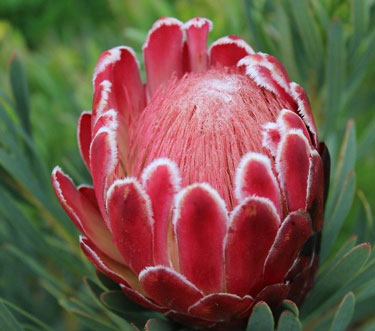
Protea 'Venus'
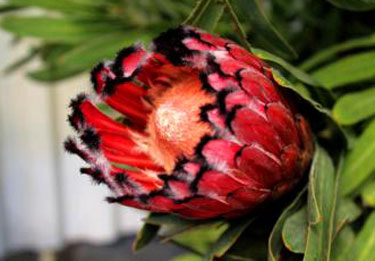
Protea 'Rose Mink'
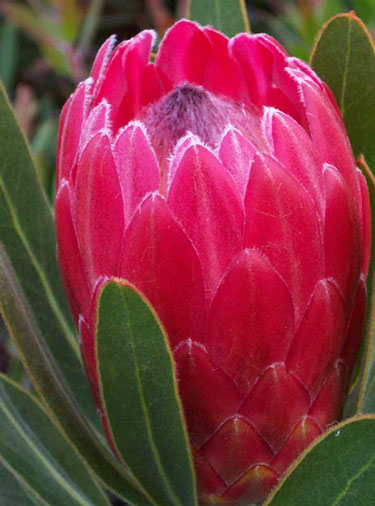
Protea 'Red Ice'
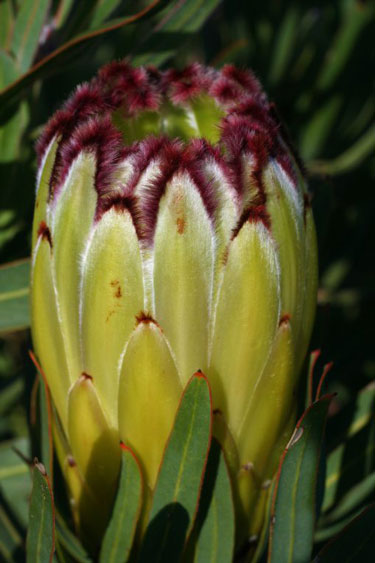
Protea 'Limelight'
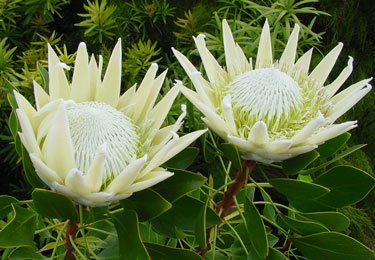
Protea 'Arctic Ice'


